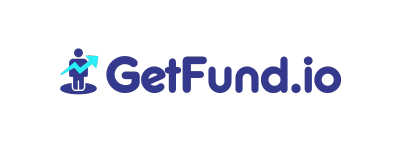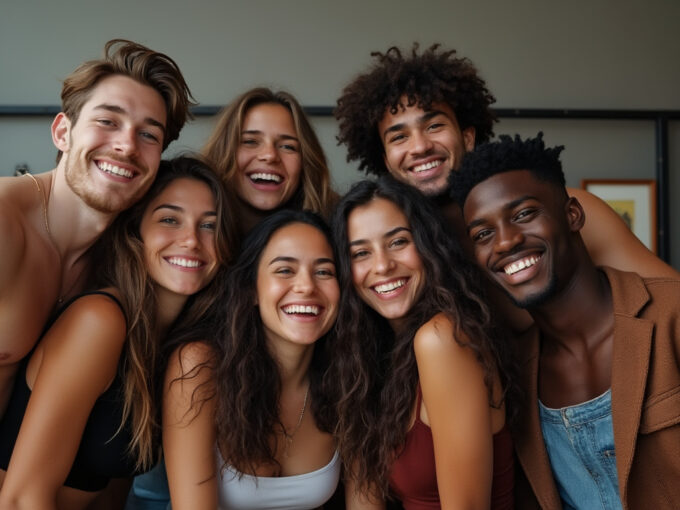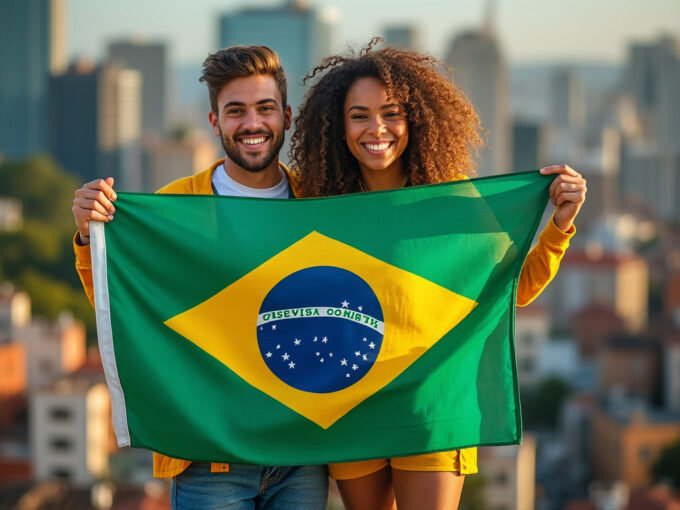Follow our developers:

Navigating the Funding Landscape for Independent Artists: Challenges and Solutions
Introduction to the Challenges Facing Independent Artists
The journey of independent artists often entails navigating a complex landscape characterised by various challenges. One of the primary obstacles is the lack of financial support, which can severely hinder an artist’s ability to produce and promote their work. Unlike their mainstream counterparts, independent creatives commonly struggle to access funding for independent artists, making it difficult to sustain their artistic practice and reach their audience. This lack of resources often results in a reliance on personal finances or alternative income sources, which may also be unstable.
Moreover, systemic barriers persist within creative industries, complicating the path for many artists. Funding access disparities, influenced by factors such as geographical location, lack of connections, or underrepresentation within the industry, can create significant hurdles. Emerging musicians, dancers, and other performers might find it particularly challenging to discover suitable dancers funding programs, art funding opportunities, or sponsorships. The competitive nature of these industries further compounds the issue, forcing artists to differentiate themselves in an overcrowded market where visibility is paramount.

The saturation of the market is another pressing concern. The sheer volume of content being produced daily makes it increasingly difficult for independent artists to stand out and secure the attention of funding bodies. For instance, platforms that traditionally support funding for influencers are now inundated with proposals, leading to heightened competition and a more rigorous selection process. According to a recent study from the National Endowment for the Arts, many independent artists report feeling disheartened by their funding attempts, citing rejection or lack of response as a common experience.
Artists often face unique struggles that call into question the sustainability of independent careers in the current landscape. These ongoing challenges necessitate alternative solutions, increased advocacy, and innovative frameworks to support independent artists in their creative endeavours.
Understanding the Different Types of Independent Artists
Independent artists play a crucial role in the contemporary cultural landscape, and they come in various forms, each facing distinct challenges in securing funding and navigating their career paths. Among these artists are bloggers, dancers, influencers, gamers, and a myriad of other creative individuals.

Bloggers, for example, utilize platforms to relay their thoughts, experiences, and expertise. While they can monetize through affiliate marketing or sponsored posts, many struggle with securing consistent funding for their creative endeavours. In contrast, performers like dancers often rely on grants, sponsorships, or crowdfunding initiatives to pursue their artistic practices. Funding for dancers involves navigating competitive programs, such as government-supported arts grants or private grants aimed at supporting dynamic performances.
Similarly, influencers have revolutionised how art and culture are disseminated. Platforms such as Instagram, TikTok, Facebook or YouTube create opportunities for monetisation; however, influencers must constantly innovate to attract sponsorship deals. Their need for sustainable funding often leads them to seek various fundraising avenues beyond corporate sponsorship. For gamers, the landscape can be equally complex, as they may pursue funding via crowd-sourced initiatives or subscription models, which can fluctuate based on audience engagement.
Each type of independent artist faces unique circumstances, and their contributions are diverse. Visual artists, musicians, and theatrical performers also highlight the necessity for dedicated art funding that can support their projects. By examining relevant case studies and profiles, we can understand the varying experiences faced by independent artists, shedding light on their continuous pursuit of funding amidst challenges. These artists enrich our culture with their distinctive voices and talents while pushing the boundaries of creativity and innovation.
The Struggle for Financial Sustainability
Independent artists face significant financial challenges that can hinder their ability to create and sustain their work. One of the primary issues is unpredictable income. Unlike traditional employment, which often provides consistent wages, many artists operate on a project-to-project basis. This lack of stable funding for independent artists can lead to financial insecurity, making it difficult to budget for essentials such as housing, materials, and marketing. Moreover, as competition for available funding, including grants and sponsorships, intensifies, independent artists find themselves competing against numerous peers for limited resources.

The impact of economic downturns exacerbates these challenges. When budgets tighten, funding for musicians and other creators often sees a reduction. Arts funding programs may be among the first to face cuts during economic hardships, leaving many artists to fend for themselves. In addition to the monetary constraints, the emotional toll of financial instability can negatively affect creativity, further destabilising an artist’s career. For example, a dancer who relies on a dancers funding program may find that these grants have become less accessible, ultimately diminishing their capacity to perform and present work.
Real-life examples illustrate these systemic issues. An emerging musician may invest numerous hours into crafting music only to find that funding sources are oversaturated, creating barriers that prevent them from achieving recognition. Similarly, visual artists may face challenges in securing art funding due to grant requirements that are often misaligned with their creative projects. These instances underscore the broader landscape of financial uncertainty in which independent artists find themselves, prompting a critical need for innovative solutions that will help mitigate these obstacles. In conclusion, the struggle for financial sustainability within independent artistry is multifaceted, requiring new approaches and a collaborative effort to create viable funding structures that support diverse talents.
Identifying Specific Barriers to Funding
For independent artists seeking funding, numerous obstacles can impede their efforts. One major barrier arises from biases in funding decisions, which can manifest in many forms, such as preference for established artists over newcomers or favouritism towards certain art forms. These implicit biases, often influenced by preconceived notions of what constitutes ‘worthy’ art, restrict access to funding for many talented individuals. As independent artists attempt to secure financial resources, they may find themselves consistently overlooked due to these systemic biases.

Another significant challenge lies within the lack of transparent application processes. Often, funding organisations do not provide clear guidelines or publicly accessible criteria for their decision-making processes. This opacity can be disheartening and confusion-inducing for independent artists who are unsure about how to present their work. A non-transparent process adds an additional layer of complexity to how to find funding for musicians or artists in need of financial support. Without clear expectations and criteria, artists may question the viability of their applications, which can dissuade them from even applying.
Furthermore, inadequate outreach from funding organizations can exacerbate the challenges faced by independent artists. Many arts funding programs may prioritize communicating with established organizations, thereby neglecting direct engagement with individual artists. This lack of outreach can contribute to the misinformation about available funding opportunities, leaving many artists uninformed about programs such as dancers funding programs, art funding, and funding for influencers. As a result, the disconnect between funding opportunities and prospective applicants remains a wound that can limit the diversity and innovation within the artistic community.
In conclusion, addressing these barriers is imperative to create a more equitable funding landscape that empowers independent artists to thrive. By recognising and mitigating biases, improving transparency, and enhancing outreach efforts, the art world can foster a more inclusive environment for all.
Real-Life Examples of Funding Challenges
Understanding the landscape of funding for independent artists can be significantly enhanced by examining real-life case studies. One such example is a musician named Sarah, who had dedicated years to developing her craft. Despite her evident talent and positive reception from local venues, Sarah struggled to find adequate funding for her album. Approaching various art funding programs proved futile, as most required established credentials that she lacked. The financial strain not only stunted her artistic growth but also led to her withdrawing from the music scene for an extended period.

Another compelling narrative involves a contemporary dancer, Mark, who participated in auditions for a prestigious dance company. Mark’s performance received acclaim, but securing a dance funding program became a daunting task. He faced challenges in pinpointing grants specifically tailored for independent dancers, which hindered his ability to participate in key training opportunities. This experience not only delayed his career progression but also exemplified the broader implications of inconsistent funding structures that often overlook emerging artists.
A third example centres on an emerging visual artist, Laura, who sought to organize an exhibition in her local community. After compiling a list of potential sponsors and funding for influencers, she quickly discovered that the process was rife with competition and significant barriers to entry. Despite her innovative ideas and community interest, securing financial backing proved increasingly difficult. This led to the unfortunate cancellation of her exhibition, underscoring the environmental limitations that independent artists often face.
These stories provide a crucial insight into the complexities of navigating funding challenges. By showcasing the realities faced by these individuals, a deeper understanding of how to find funding for musicians and other artists is established, highlighting the necessity for improved support systems within the arts community. In conclusion, it is imperative for advocates to create more accessible pathways for independent artists to secure the necessary resources for their creations and careers.
Exploring Traditional Funding Sources and Their Limitations
Independent artists often find themselves navigating a complex funding landscape that traditionally includes grants, government funding, and crowdfunding platforms. Each of these sources has its unique advantages and disadvantages, shaping the experiences of artists seeking financial support. Grants and government funding, for instance, can provide significant financial assistance without the necessity of repayment. These sources are generally allocated based on specific criteria and proposals, making them highly competitive. This competitive nature often results in a limited number of awards being distributed, leaving many artists without the essential funds they seek.

Moreover, the bureaucratic processes inherent in applying for government funding can be daunting. Filling out intricate applications and waiting for long periods to receive decisions can deter many independent artists from pursuing these paths. Furthermore, the projects that receive funding often must align closely with the funding bodies’ strategic priorities, which may not correspond with the artists’ creative visions or needs. As a result, while government grants can represent excellent art funding opportunities, they often do not cater to the diverse needs of all independent artists.
Crowdfunding platforms have emerged as popular alternatives, allowing a broader range of artists to directly appeal for financial support from their audience. While crowdfunding can offer immediate capital and foster community engagement, it also carries significant limitations. Successful campaigns require substantial marketing efforts, and the responsibility to continuously engage with backers can overwhelm artists. Moreover, there is no guarantee that a campaign will reach its funding target, and failed campaigns can discourage artists from pursuing future funding endeavours.
In conclusion, while traditional funding sources such as grants, government funding, and crowdfunding platforms provide vital support to independent artists, their inherent limitations make them insufficient as standalone solutions for long-term financial sustainability. Hence, exploring additional funding avenues and alternative strategies is imperative for fostering artistic growth and innovation.
The Emergence of Cooperative Funding Systems
As independent artists seek funding to support their creative endeavours, traditional funding approaches often present a host of challenges. The emergence of cooperative funding systems is proving to be a viable alternative for many in the artistic community. These systems represent a paradigm shift towards collaborative financial models that emphasise community engagement and mutual support among artists. By pooling resources and leveraging shared networks, independent musicians, dancers, influencers, gamers, bloggers and visual artists can create avenues for funding that are more accessible than conventional methods.

Cooperative funding enables artists to unite around common interests or projects, allowing them to collectively navigate the complexities associated with securing art funding. This model fosters a supportive environment where members can offer financial assistance, share insights on how to find funding for indie musicians and creatives, and organize events that amplify their exposure and reach. It also encourages participation from various stakeholders, including local businesses and art lovers who are inclined to invest in the community.
One notable advantage of these cooperative funding systems is their ability to alleviate some of the limitations faced by independent artists reliant on conventional funding sources. Traditional methods often involve lengthy application processes and competitive selection criteria, resulting in a discouraging experience for many creators. In contrast, cooperative funding emphasises inclusivity and offers a platform where artists can easily present their projects, find dancers funding programs, or promote initiatives aimed at enhancing the local art scene.
This collaborative approach not only enhances the likelihood of obtaining necessary financial support but also strengthens community ties. By sharing resources, talents, and knowledge, artists benefit from a sense of solidarity and empowerment. Ultimately, the emergence of cooperative funding systems can redefine the way independent artists access the financial support they need to thrive, making art funding a more attainable goal for all involved.
Introducing GetFund.io: A Solution for Independent Artists
In recent years, the need for accessible funding for independent artists has surged, leading to a variety of solutions aimed at addressing this challenge. One such innovative platform is GetFund.io, a cooperative funding system designed specifically for artists and creatives across a multitude of disciplines. This platform seeks to bridge the financial gap by enabling artists to support one another while also connecting them with companies invested in socio-constructive initiatives.

GetFund.io operates on a unique model of mutual support, allowing artists to pool resources and expand their creative possibilities through community-driven funding. By participating, independent musicians, dancers, influencers, gamers, bloggers and visual artists can access a diverse array of funding opportunities tailored to their specific needs. Additionally, the platform emphasises collaboration within the arts community, encouraging independent creators to engage with each other and explore joint projects, thus fostering a rich ecosystem where art funding becomes a shared responsibility.
The features of GetFund.io are being designed with user-friendliness in mind. Through its intuitive interface, artists can easily participate in funding rounds and free rewards rounds, showcase their works, and be seen by potential backers. Furthermore, GetFund.io also hosts various funding campaigns and contests, allowing users to discover opportunities that align with their artistic visions. Testimonials from satisfied beta users illustrate the platform’s effectiveness, often highlighting the supportive network it provides. Many independent artists report that they felt less isolated in their funding endeavours and more empowered to pursue their creative aspirations.
In essence, GetFund.io represents a pivotal movement within the landscape of art funding, enabling artists to seek and secure the financial backing they need while cultivating a sense of community among creatives. This approach not only benefits individual artists but also elevates the arts as a whole, ensuring that diverse forms of expression continue to thrive in an ever-evolving cultural context though a socio-constructive environment.
How to Get Involved and Access Funding
Navigating the funding landscape can be challenging for independent artists, producers and creatives. However, using platforms like GetFund.io can greatly improve your chances of getting the funds you need. To get started, create a free account and explore the available free reward and funding rounds. This can lead to various reward amounts, from small to large, being directly transferred into the chosen member’s bank account.
GetFund.io members can create a comprehensive profile that highlights their skills, artistic vision, and field of work. A well-crafted profile not only showcases the artist’s work but also increases the likelihood of attracting potential backers interested in funding for independent artists.

Once the profile is established, artists are encouraged to actively engage with the GetFund.io community. This engagement can take several forms—above earning rewards and funding—such as participating in discussions, attending virtual events, or collaborating with other artists. Networking within this supportive environment may lead to discovering how to find funding for musicians and accessing resources tailored to dancers through funding programs. By fostering relationships with both artists and influencers, one can expand their opportunities, learn from others’ experiences, and potentially receive advice on securing various forms of art funding.
In addition to building connections, artists can explore options for seeking or offering support within the community. Engaging with fellow artists allows a mutual exchange of strategies and ideas, particularly regarding how to approach funding requests. Those who have had success in obtaining funding may be willing to share their insights, thus increasing the collective knowledge of the community. Furthermore, the opportunity to offer support to others not only fosters goodwill but also enhances one’s visibility, thus attracting more funding for influencers and artists alike.
By following these steps—creating a detailed profile, engaging actively with the community, and both seeking and offering support—independent artists can effectively navigate the funding landscape and access crucial financial resources to further their artistic endeavours. Joining GetFund.io is free, so there’s no risk in creating an account and exploring the first cooperative funding system designed for independent artists and creatives.




